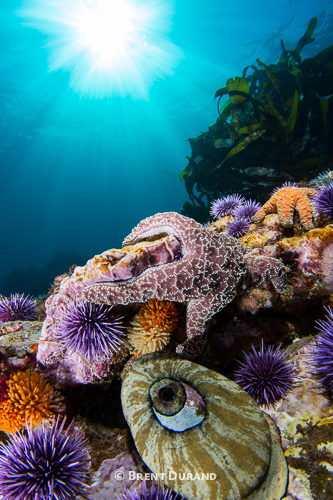Easy Ways to Eliminate Backscatter in Your Photos

Backscatter is the underwater photographer’s arch nemesis. We’ve all taken shots riddled with the distracting white specs, whether they dot the whole picture or form two semi-circles on the edge of the frame. Backscatter can (and often does) destroy an otherwise-excellent image. The good news is that there are some universal techniques for eliminating backscatter that can be applied to a variety of composition styles, from macro to wide-angle.
What is Backscatter?
Backscatter is created when particulates in the water are illuminated by strobe light, and is most commonly seen in the space between the lens and the subject. Have you every noticed that if you hold a light in front of your face in bad vis you see many more particulates than if you hold the light to the side or below? Same principal. Diving in good visibility is obviously the best solution to eliminate this, but those of us who dive in lower-vis are challenged with every push of the shutter.
In order to reduce backscatter in photos we do two things: minimize potential backscatter-causing particles and use techniques to avoid illuminating the remaining particles. Here are some easy ways to accomplish this no matter where you’re diving.

his face - backscatter.
Eliminate Backscatter Now!
1) Reduce Space Between Lens & Subject
The easiest way to reduce backscatter in an image is to reduce the potential backscatter-causing particles. Photographers need to be close to the subject, minimizing space between the front of the port/dome and what is being lit by the strobe(s). When closer to your subject (without touching it!) you also benefit from more compelling compositions, such as filling the frame and intimate eye contact with critters.
You can also minimize space between lens and subject by shooting for the conditions. Don’t shoot wide-angle if the vis is poor. Save the dome port for the clear and sunny days (unless you’re on a timeline for a specific shot).


2) Finely-Tune Your Strobe Position
Now that we’ve minimized shooting distance we need to focus on eliminating backscatter created by strobes. This is done by using the edge of the cone of light generated by the strobe to illuminate the subject without illuminating the space in front of the lens.
There are a few factors to consider when positing the strobe. First is the beam angle of the strobe. Here are some sample beam angles:
Sea & Sea YS-D1 is 100 or 120 degrees depending on diffuser
Ikelite DS161 is 100 degrees with diffuser
Inon Z240 is 110 degrees with diffuser
The beam angle will determine the angle you’re positioning the strobe away from the subject. Note that the distance to the subject will also affect the angle of the strobe. See the graphic below.

3) Practice Perfect Buoyancy
Divers are frequently responsible for kicking sand and silt into the water column, whether they’re aware of it or not. All it takes is one errant fin kick or a hand touching the sand for stability to push up a cloud of sand and silt. Your own body will also stir up a sandy bottom if you’re close to the sand in significant surge.
When diving with a buddy, make sure they know to keep a bit of distance as you’re moving in for a shot. They can explore the nearby reef or hover above and to the side, waiting their turn to check out the critter (if they haven’t yet). This will minimize the chance of them kicking sand into your shot.
When diving in sandy areas, keep an eye on your own fins. The frog kick is great for moving slowly (especially in drysuit). A properly executed scissor kick can propel you quickly across sand without stirring anything up.


There you have it. Three tips to accomplish the two secrets to eliminating backscatter from your photos. It takes practice, but the reward is worth the hours underwater.
Further Reading
RECOMMENDED ARTICLES
SUPPORT THE UNDERWATER PHOTOGRAPHY GUIDE:
The Best Service & Prices on u/w Photo Gear
 Visit Bluewater Photo & Video for all your underwater photography and video gear. Click, or call the team at (310) 633-5052 for expert advice!
Visit Bluewater Photo & Video for all your underwater photography and video gear. Click, or call the team at (310) 633-5052 for expert advice!
The Best Pricing, Service & Expert Advice to Book your Dive Trips
 Bluewater Travel is your full-service scuba travel agency. Let our expert advisers plan and book your next dive vacation. Run by divers, for divers.
Bluewater Travel is your full-service scuba travel agency. Let our expert advisers plan and book your next dive vacation. Run by divers, for divers.



































